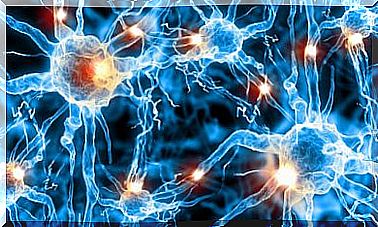Moebius Syndrome: What Does It Consist Of?
Moebius syndrome is a rare and rare disease, although its incidence appears to be increasing. The last congresses of neurology and ophthalmology in the world account for the increase in registered cases.
We can say that the main characteristic of Moebius syndrome is the lack of ability to smile ; Although those affected go through happy situations and would like to show a smile, they cannot.
But not only that. Sufferers with this rare disorder cannot perform many of the classic and typical facial gestures. Even their ability to move their eyes from side to side, for example, is affected.
This happens because they have not partially or completely developed two pairs of cranial nerves: pair number six and pair number seven. These nerves manage the muscles of the mimicry and part of the muscles that perform some eye movements.
As we will see later, each pair of cranial nerves has specific functions. Nerve number six is the one that regulates the laterality of the eye, and number seven is called the “facial nerve” because it controls facial expressions.
We know that Moebius syndrome usually appears in isolation. In other words, it is not common for a family to have more than one confirmed case. It is estimated that one in every 120,000 people is born with the problem.
What are the cranial nerves?
Let’s first see what the pairs of cranial nerves are and their functions, to later understand why Moebius syndrome has the symptoms that it has. The cranial nerves are:
- Optical: it is the nerve of vision.
- Trigeminal: involved in chewing.
- Facial: the other nerve affected in the pathology.
- Olfactory: carries the information to perceive smells.
- Hypoglossal: innervates muscles of the tongue and neck.
- Auditory: carries the information we hear to the brain.
- Glossopharyngeal: transmits part of the taste that the tongue captures.
- Pathetic: it also innervates eye movement muscles.
- External ocular motor: one of those affected in Moebius syndrome.
- Vague: it extends outside the skull to reach the thorax and abdomen.
- Accessory: it also extends outside the skull to the muscles of the neck and back.
- Oculomotor: it is the third cranial nerve and innervates part of the eye movement muscles.
Etiology of Moebius syndrome
It should be clarified that although it is known as a syndrome, in reality it is not. Moebius is what is known in genetics as a sequence. In the sequences there are many malformations at the same time, originating from a single anomaly.
In the case of Moebius, the anomaly is the lack of development or the total absence of nerve nuclei in cranial nerves number six and seven. Both the imaging studies performed on patients and the autopsies performed coincide in the diagnosis.
The etiology is not always genetic. Cases have been recorded in which the cranial nerve problem is caused by medication. Misoprostol is the drug that has been most associated with the problem, as indicated by a group of researchers from the Universidad del Norte, in Barranquilla, Colombia.
This drug is generally used as an abortifacient, and if it fails to do so, the subsequent pregnancy can develop Moebius syndrome.

Symptoms of Moebius syndrome
Newborns with Moebius syndrome not only lack facial expression, but they also often have difficulty breathing. They drool excessively and their muscle tone is weak, which can affect walking.
If to this we add the possibility that those affected suffer deformities in the feet, the displacement is really at risk of delay. Other symptoms that have been recorded as associated are:
- Ogival palate.
- Lack of eyelids.
- Hypersensitivity to the sun and strong lights.
- Hearing problems due to the accumulation of fluids in the inner and middle ear.
Experimental treatments
There is no cure for Moebius syndrome. Once installed, it is not fully reversible. Facial rehabilitation sessions have not been shown to be effective.
There is an experimental surgical treatment that has been started in Canada. It consists of an intervention where a muscle graft is performed in the facial area to allow the expression of a smile.

It is estimated that the greatest success of the surgery is in performing it when the patient is around five years old. Although the practice is promising, the truth is that it is not available worldwide and access costs are not universal either.
One of the struggles that family members of patients with Moebius syndrome carry out is to avoid discrimination. For this reason, they try to create awareness in the population, emphasizing that those affected have feelings, even if they cannot express them.
Treatments continue to be experienced in the medical world. Surgical projections are encouraging. Meanwhile, it is essential to respect these patients and understand that their inclusion in social life depends on the greater knowledge that can be had of their condition.









